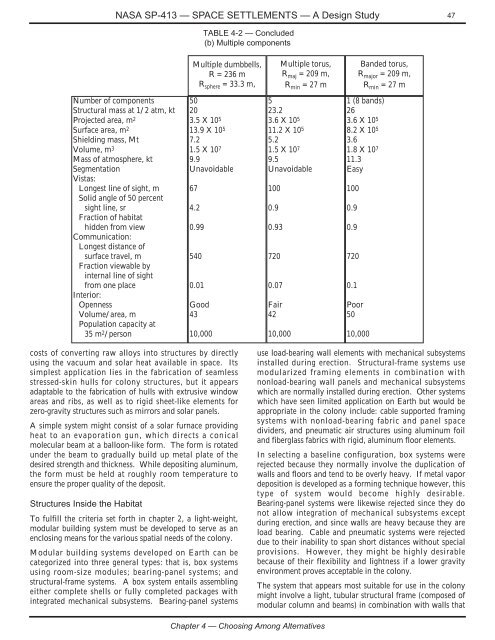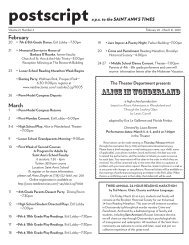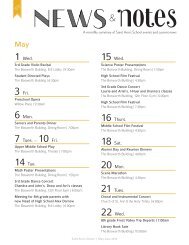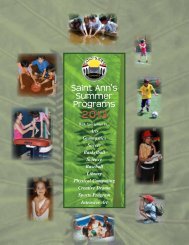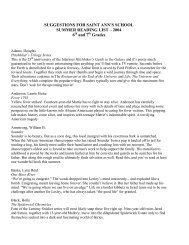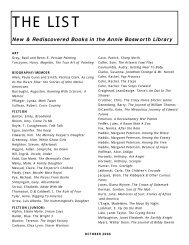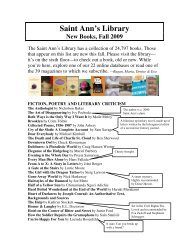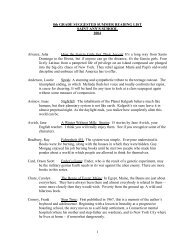NASA SP-413 Space Settlements - Saint Ann's School
NASA SP-413 Space Settlements - Saint Ann's School
NASA SP-413 Space Settlements - Saint Ann's School
Create successful ePaper yourself
Turn your PDF publications into a flip-book with our unique Google optimized e-Paper software.
<strong>NASA</strong> <strong>SP</strong>-<strong>413</strong> — <strong>SP</strong>ACE SETTLEMENTS — A Design Study<br />
47<br />
TABLE 4-2 — Concluded<br />
(b) Multiple components<br />
Multiple dumbbells,<br />
R = 236 m<br />
R sphere = 33.3 m,<br />
Multiple torus,<br />
R maj = 209 m,<br />
R min = 27 m<br />
Banded torus,<br />
R major = 209 m,<br />
R min = 27 m<br />
Number of components<br />
Structural mass at 1/2 atm, kt<br />
Projected area, m 2<br />
Surface area, m 2<br />
Shielding mass, Mt<br />
Volume, m 3<br />
Mass of atmosphere, kt<br />
Segmentation<br />
Vistas:<br />
Longest line of sight, m<br />
Solid angle of 50 percent<br />
sight line, sr<br />
Fraction of habitat<br />
hidden from view<br />
Communication:<br />
Longest distance of<br />
surface travel, m<br />
Fraction viewable by<br />
internal line of sight<br />
from one place<br />
Interior:<br />
Openness<br />
Volume/area, m<br />
Population capacity at<br />
35 m 2 /person<br />
50<br />
20<br />
3.5 X 10 5<br />
13.9 X 10 5<br />
7.2<br />
1.5 X 10 7<br />
9.9<br />
Unavoidable<br />
67<br />
4.2<br />
0.99<br />
540<br />
0.01<br />
Good<br />
43<br />
10,000<br />
5<br />
23.2<br />
3.6 X 10 5<br />
11.2 X 10 5<br />
5.2<br />
1.5 X 10 7<br />
9.5<br />
Unavoidable<br />
100<br />
0.9<br />
0.93<br />
720<br />
0.07<br />
Fair<br />
42<br />
10,000<br />
1 (8 bands)<br />
26<br />
3.6 X 10 5<br />
8.2 X 10 5<br />
3.6<br />
1.8 X 10 7<br />
11.3<br />
Easy<br />
100<br />
0.9<br />
0.9<br />
720<br />
0.1<br />
Poor<br />
50<br />
10,000<br />
costs of converting raw alloys into structures by directly<br />
using the vacuum and solar heat available in space. Its<br />
simplest application lies in the fabrication of seamless<br />
stressed-skin hulls for colony structures, but it appears<br />
adaptable to the fabrication of hulls with extrusive window<br />
areas and ribs, as well as to rigid sheet-like elements for<br />
zero-gravity structures such as mirrors and solar panels.<br />
A simple system might consist of a solar furnace providing<br />
heat to an evaporation gun, which directs a conical<br />
molecular beam at a balloon-like form. The form is rotated<br />
under the beam to gradually build up metal plate of the<br />
desired strength and thickness. While depositing aluminum,<br />
the form must be held at roughly room temperature to<br />
ensure the proper quality of the deposit.<br />
Structures Inside the Habitat<br />
To fulfill the criteria set forth in chapter 2, a light-weight,<br />
modular building system must be developed to serve as an<br />
enclosing means for the various spatial needs of the colony.<br />
Modular building systems developed on Earth can be<br />
categorized into three general types: that is, box systems<br />
using room-size modules; bearing-panel systems; and<br />
structural-frame systems. A box system entails assembling<br />
either complete shells or fully completed packages with<br />
integrated mechanical subsystems. Bearing-panel systems<br />
use load-bearing wall elements with mechanical subsystems<br />
installed during erection. Structural-frame systems use<br />
modularized framing elements in combination with<br />
nonload-bearing wall panels and mechanical subsystems<br />
which are normally installed during erection. Other systems<br />
which have seen limited application on Earth but would be<br />
appropriate in the colony include: cable supported framing<br />
systems with nonload-bearing fabric and panel space<br />
dividers, and pneumatic air structures using aluminum foil<br />
and fiberglass fabrics with rigid, aluminum floor elements.<br />
In selecting a baseline configuration, box systems were<br />
rejected because they normally involve the duplication of<br />
walls and floors and tend to be overly heavy. If metal vapor<br />
deposition is developed as a forming technique however, this<br />
type of system would become highly desirable.<br />
Bearing-panel systems were likewise rejected since they do<br />
not allow integration of mechanical subsystems except<br />
during erection, and since walls are heavy because they are<br />
load bearing. Cable and pneumatic systems were rejected<br />
due to their inability to span short distances without special<br />
provisions. However, they might be highly desirable<br />
because of their flexibility and lightness if a lower gravity<br />
environment proves acceptable in the colony.<br />
The system that appears most suitable for use in the colony<br />
might involve a light, tubular structural frame (composed of<br />
modular column and beams) in combination with walls that<br />
Chapter 4 — Choosing Among Alternatives


